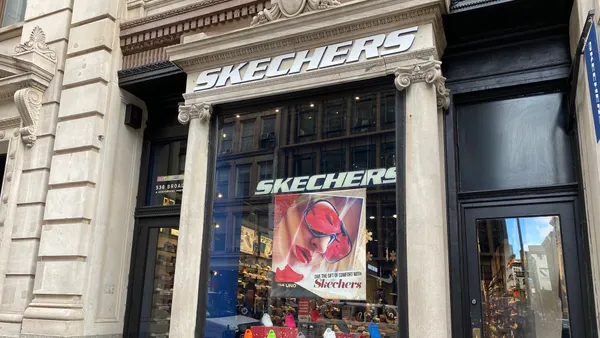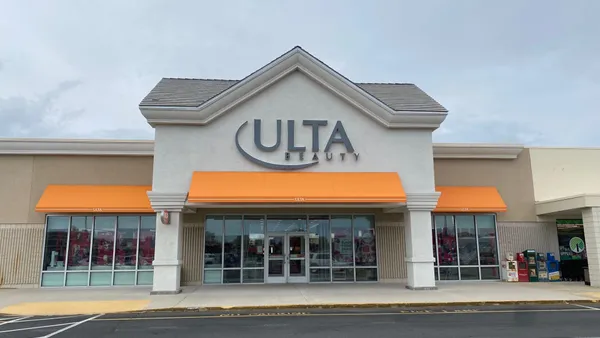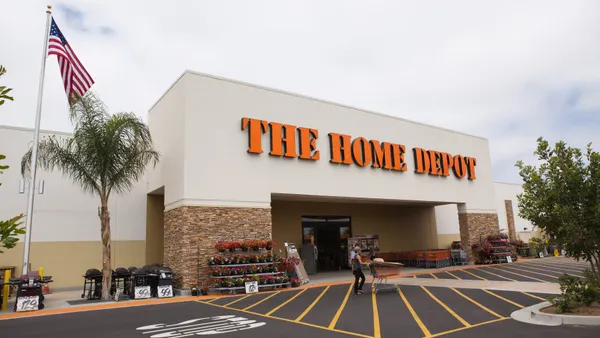Dive Brief:
- Rite Aid reported third quarter quarter revenues increased year over year, just barely, to $5.46 billion from $5.45 billion the year before, driven mainly by pharmacy services. Front-end store sales decreased 0.5% overall, though comparable front-end sales (excluding tobacco) increased 1%.
- At $53.2 million, the drugstore retailer's operating income improved significantly compared to an $18.7 million loss in the same period last year, according to a press release. The increase was due mainly to a gain on debt retirement as well as an improvement in the company's EBITDA. Net income in Q3 came to $51.5 million.
- Revenue and earnings beat the FactSet consensus for Rite Aid, giving the company's stock a boost of more than 20% in premarket trading, according to MarketWatch.
Dive Insight:
Rite Aid got a much needed win for Q3 after posting a $178.9 million loss and revenue declines, including a 1.1% front-end sales drop, for the first half of the fiscal year. CEO Heyward Donigan said the strong quarter gave the company "momentum as we prepare to roll out our long-term strategy."
"While we are pleased with these results, we have important work ahead of us to put our company on a path to long-term sustainable growth," she added, noting her team would soon release a comprehensive strategy for Rite Aid aimed at revitalizing its pharmacies "as fresh and relevant."
Donigan, while still new to the job, expressed optimism after a Q2 that brought losses and sales declines, but said in the same breath the company needed "urgency" in its turnaround efforts.
Rite Aid has been losing money and market share as it tries to compete with its massive competitors CVS and Walgreens — which keep getting bigger through acquisitions and partnerships. (Although even the much-larger Walgreens has had a bumpy year, with declining retail sales, and is reportedly mulling a massive private equity buyout.)
In contrast, Rite Aid is "structurally disadvantaged," with regional concentration and a lack of national scale, Fitch analysts said in October as they downgraded the retailer's long-term default rating to B-.
The analysts did note that Rite Aid "benefits from close relationships with end customers." Also protecting its financial and market position are strong liquidity, good real estate position in local markets, a stable pharmacy benefits manager business and nearly four years until major debt maturities, in Fitch's view. In addition, Rite Aid has slashed costs, including through hundreds of job cuts, in an effort to improve its bottom line.













